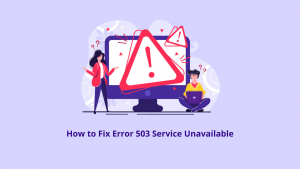Productivity efficiency has increased due to the adoption of revolutionary technology empowered by essential and effective instruments such as Telehealth Solutions across all healthcare industries. This has helped every industry succeed in a variety of ways. Healthcare providers, employees, and patients are becoming more interested in these solutions—there is a good reason.
This is partially because it makes many healthcare-based processes easier. Nonetheless, Telehealth Solutions will be required differently across varying healthcare contexts. Variations in the types of patients and user populations are the cause. Most healthcare system solution teams in the industry have a strong base of experience in telehealth, telemedicine, and telepresence.
Technically, they serve as a single source for every aspect of the selection, assessment, review, implementation, and integration process, including technology and workflow development. Leading medical facilities must explore how telehealth solutions can help their healthcare organizations optimize their supply chain management, reduce resource waste, and lower running costs.
Additionally, predictive analytics can help healthcare providers anticipate patient needs and allocate resources accordingly, leading to better patient outcomes. With that in mind, evaluating where telehealth solutions are needed most is crucial. In-depth advice on how healthcare practitioners can determine whether they require telehealth solutions will be covered in this article.
Understanding Why Telehealth Solutions Matter In Healthcare Settings
Telehealth Solutions is a technical approach that assists medical systems or healthcare providers with selecting and implementing low-cost, high-quality telemedicine systems and workflow. Whether establishing a telehealth network, leveraging existing equipment, or optimizing existing programs, Telehealth Solutions has the expertise to make your program successful.
Telehealth Solutions is vendor agnostic, so the solutions under development integrate the best of emerging technology with your existing resources to create a system that meets your specific needs. Choosing an innovative, tech-driven company’s high-quality, competitively priced services can assist with assessing, selecting, and implementing telemedicine and medicare solutions.
As a medical practitioner, it’s worth evaluating how telehealth solutions can serve as your partner for all specialties and services related to revolutionary medical demands. Equally important, it’s also crucial to ensure that you have fully optimized telehealth solutions that meet the needs of stakeholders throughout your organization. Focus on elements that enable better healthcare.
Remember, the spread of telecommunications technologies has not only made healthcare more accessible but also raised the bar for what patients expect from providers and their services. Advances in telehealth solutions, from real-time consultation appointments with doctors to follow-up care, have provided continuity of medical care that was previously unattainable.
How To Evaluate Telehealth Solutions Need For Healthcare Environments
The medical industry has seen a seismic shift with the advent of advanced telehealth software, bringing advice and care to patients. As the technology has matured, telemedicine options have exploded, serving various medical specialties and patients’ needs. In the digital age, “waiting rooms” are being redefined as patients increasingly expect immediate access to healthcare.
Unfortunately, most healthcare providers are often pushed to select a telehealth system largely dependent upon a specific technology, hardware, or software – regardless of whether it meets their needs or offers future expansion opportunities. The secret is to develop bespoke telehealth solutions that expand efficient healthcare access and ensure seamless user connections.
The expert on-demand and one-click convenience of connecting with medical providers is desirable and has become the new norm in patient care standards. Healthcare providers need not only to implement new telecommunications technologies but also to provide a level of service that meets changing patient expectations in the era of mobile devices — all within a mouse click.
As a rule of thumb, you must choose a partner who understands the unique dynamics of your care delivery model, ensuring that the custom telehealth solutions are perfectly aligned with your operational goals. Below are recommendations for the factors that medical staff members in all healthcare settings should consider while thoroughly evaluating their telehealth solutions.
1. User Population
Every healthcare setting has a distinct user demographic. The ranges of users may be comparable, but the exact amount is different. One crucial statistic that can be used to evaluate the demand for telehealth solutions, like the one offered by Empeek, in healthcare settings is the number of people who visit the facility daily. Surveys can help obtain the everyday user population.
Healthcare practitioners can learn more about their requirements for telehealth solutions from these statistics. They also have ideas on other features and scalability that the solutions should incorporate. This includes telemedicine software that supports routine check-ups, chronic disease management, and general health maintenance with tools for electronic health records.
2. Smart Healthcare
In this case, Smart Hospitals, or digital hospitals, are healthcare facilities that utilize modern technology and innovations to improve patient care and operational efficiency. The concept of Smart Hospitals has gained popularity in recent years as healthcare organizations have increasingly recognized the need for innovative approaches to improve the quality of patient care.
Likewise, it simultaneously helps reduce investment costs. This also helps optimize medical recipient tracking, empower seamless patient appointment management, and easy scheduling. Therefore, understanding that Smart Hospitals can utilize innovative technology to streamline processes and eliminate inefficiencies is invaluable.
3. Worker Efficiency
A wide range of experts work in the diverse sector of healthcare. Medical doctors, nurses, healthcare assistants, specialists, and all others are among the professionals frequently seen in a healthcare context. Each has specific duties and obligations. The effectiveness of these employees can be evaluated to determine whether there is a need for telehealth solutions.
It would also help to consider how the workers’ productivity levels affect the overall effectiveness of the workload in healthcare settings. This gives you the knowledge to decide whether telehealth solutions are suitable. You also learn which telehealth options to choose if necessary.
4. Patient Experiences
Patients have roles in any care plan they have. Even though it may not seem like much, their assistance is vital in enabling medical professionals to provide a treatment plan that effectively meets their needs. It is possible to determine whether telehealth solutions are necessary in healthcare settings by examining how these patients interact with their responsibilities.
However, a poll must be conducted before this conclusion can be made. There may also be room for A/B Testing to gather more data. The comments received from each can then be used as a helpful indicator to determine whether or not to implement telehealth solutions. Work on patient check-in, appointment scheduling, and other tasks to save staff time and reduce waiting.
5. Integrative Technology
Evaluating the best ways your healthcare facility can leverage technology while integrating telehealth solutions to optimize service delivery and improve patient experiences is essential. In addition, it can also improve patient care by providing faster and more accurate diagnoses, personalized treatment plans, and better communication between patients and healthcare teams.
For example, medical professionals can use digital records to eliminate paper-based systems, resulting in faster, more accurate records through automated bookkeeping and better communication between medical staff. Additionally, computerized systems for patient check-in, appointment scheduling, and other tasks can save staff time and reduce waiting times.
Why Should Healthcare Centers Create Custom Telehealth Solutions?
Custom telehealth solutions for healthcare aren’t just about keeping up with technology and better access — it’s about taking a step towards scalability, Return On Investment (ROI), customization, and reach. By leveraging a system built around your specific patient’s needs, you gain a competitive edge, offering a level of service that off-the-rack software cannot match.
Seamless integration with insurance billing systems ensures that telehealth services are reimbursed accordingly, streamlining the payment process for providers and patients. This feature also includes detailed reporting capabilities, allowing for transparent tracking of claims and reimbursements, which is crucial for financial planning and audit purposes. It can also adapt to insurance.
It’s also bound to withstand healthcare changes, maintaining provider compliance. A robust scheduling module enables virtual and physical appointments to be coordinated, allowing physicians to manage their calendars effectively and optimize medical recipient flow. The system has customizable templates for different visit types — it can accommodate last-minute changes.
Likewise, it can also accommodate cancellations, minimizing administrative strain and improving patient satisfaction. AI system assistance for doctors is constantly learning and evolving with each case. This helps enhance its diagnostic precision while cross-referencing with the latest medical research to keep doctors at the forefront of medical knowledge. Below are more benefits.
1. Easy To Scale
Integrated telehealth solutions are inherently designed for growth, allowing for easy updates without future service interruptions. Tailor-made integrated telehealth solutions and software can expand functionality, accommodate more users, and integrate new services as your practice grows, all while maintaining the security and compliance crucial for healthcare professionals.
An automated system sends reminders of appointments to both physicians and patients, ensuring appointment compliance and reducing no-shows that can disrupt the doctor’s daily schedule. These reminders of appointments can also be tailored to the specific needs of the doctor and patients, such as additional instructions for preparation before a procedure.
2. Improve ROI
Integration with Electronic Health Records (EHR) allows physicians immediate access to recipients’ medical histories, test results, and previous consultations, facilitating informed decision-making and continuity of care. Additionally, it enables real-time updates to patient records, ensuring that all health teams are informed of any changes in a patient’s status or treatment plan.
As mentioned, investing in custom telehealth solutions often leads to a significant improvement in Return On Investment (ROI), with the dual advantage of cost savings and increased revenue. Your business can operate more efficiently by reducing no-shows, optimizing appointments, cutting overhead costs associated with in-person visits, and utilizing telehealth services.
3. Custom Practices
Custom telemedicine solutions and services can be developed to fit your practice’s specific needs and nuances. It ensures that the right technology will support your operational methods and enhance the quality of care delivered to your patients, not visa versa. A great system can integrate with personal calendar applications to help doctors and patients manage their appointments.
A custom telehealth solution for the Internet of Things (IoT) remote monitoring can allow the healthcare team to obtain all the necessary metrics and make people comfortable with health data measurement. The infrastructure is often cloud-based, utilizing platforms and services like AWS or Azure for their scalability and compliance features to meet healthcare regulations.
4. Medication Management
A telehealth solution can also assist doctors in managing and tracking patient prescriptions, including the ability for physicians and patients to order refills, make appointments, manage dosage schedules, and ensure compliance with medication regimens. Such an advanced system enhances patient adherence and incorporates decision-support tools to alert patients and physicians.
In particular, it can make quick alerts about potential drug interactions, allergies, and other contraindications, thereby improving the safety of pharmaceutical care. The utilization of Artificial Intelligence (AI) can assist doctors in diagnosing patients from images, data analysis, and symptom checking while providing support for physicians in delivering accurate and timely care.
5. More Outreach
Custom telemedicine solutions can break down geographical barriers, allowing your practice to reach patients who are remote, immobile, or otherwise unable to visit in person, thereby democratizing access to services. Encrypted communication channels help to securely discuss clinical care with colleagues and communicate directly with patients.
By all means, this helps ensure confidentiality and compliance with healthcare regulations such as HIPAA. This secure messaging framework can be expanded to include multidisciplinary participants, creating a collaborative environment for patient care and enabling a more holistic approach to patient health. It can also be helpful when sending massive message alerts.
In Conclusion;
Chances are that Telehealth Solutions can significantly help revolutionize, digitize, and innovate the healthcare environments. For instance, telemedicine technology can enable healthcare teams to monitor patients remotely, reducing the need for hospital visits and minimizing the risk of infections. Additionally, digital imaging systems can help make more accurate diagnoses.
As a result, this may lead to more effective treatment plans. With the increasing threat of cyber-attacks in the healthcare industry, Telehealth Solutions can utilize advanced security measures to safeguard sensitive patient information. For example, through the empowerment of AI systems, blockchain technology can help ensure the integrity and confidentiality of medical records.
Get Started: A Reliable Software Delivery Partner Is Closer Than You Think
In other words, telehealth solutions have many advantages in improving operational efficiency in healthcare facilities. By leveraging technology, healthcare providers can streamline processes, improve patient care, enhance security, reduce costs, and better allocate resources. Furthermore, most health organizations face mounting pressure to improve the quality of patient care.
While simultaneously reducing costs, telehealth solutions will undoubtedly play an increasingly important role in the healthcare industry. We’ve explored the dynamic approaches medical experts can use to assess their needs for telehealth solutions within their settings. These approaches should be critically examined to understand their needs holistically. We wish you all the best!









